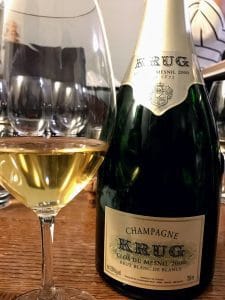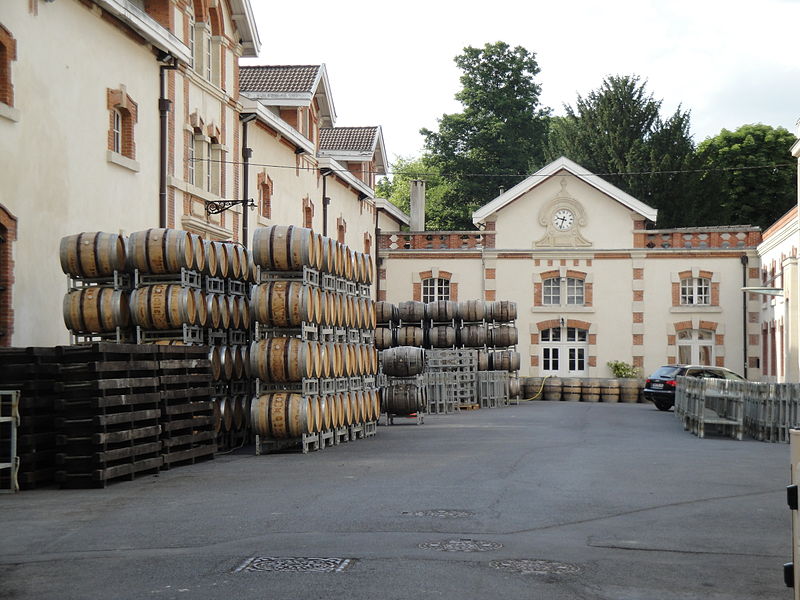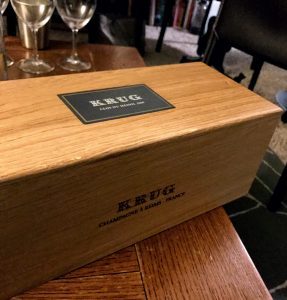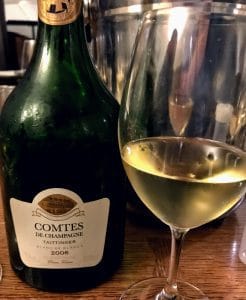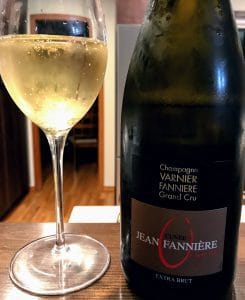Ace of Spades, part II?

Canadian rapper Drake and Brent Hocking (founder of DeLeón Tequila) are partnering to produce a new high-end Champagne called Mod Sélection. Right off the bat, the line-up will feature a $300 non-vintage Brut and a $400 NV Rosé.
That’s a hefty price tag for a Champagne house that is being created virtually out of thin air.
In comparison, consumers can pay $300-400 and get things like:
1996 Bollinger R.D. (Wine Searcher Average $328) aged ten years on the lees. Only 750 cases imported.
1996 Duval-Leroy Femme de Champagne (WS Ave $346) from 100% Grand Cru fruit that was aged 14 years on the lees. Only 1000 cases made.
Dom Perignon “P2” Brut, 2000 (WS Ave $351) aged 15 years on the lees.
Jacques Selosse Substance Blanc de Blancs Grand Cru Brut (WS Ave $312) from a solera that started in 1986. Usually only around 250 cases released at a time.
Pierre Peters L’Etonnant Monsieur Victor (WS Ave $301) from 100% Grand Cru fruit, including the best parcels of Les Chétillons, aged as a perpetual cuvee (similar to solera) that started in 1988. Only around 150 cases imported with each release.
And tons more great Champagnes for a heck of a lot cheaper.
Plus, these are all houses with established track records. We can figure out the grape source and know how long these wines have been aged. We can also get a general sense of how limited and prestigious these wines truly are. Yet, Drake and Hocking want folks to pay an equivalent price for Champagnes that no-one knows anything about?
Even Ace of Spades had a bit of a backstory.

From $60 to $300, not a bad business deal for Cattier.
Offended by comments by the CEO of his-then favorite Champagne house, Roederer, the American rapper Jay Z began promoting a brand called Armand de Brignac in 2006.
The gold plated bottle, now known as “Ace of Spades”, was made by the Champagne house Cattier. The Champagne was essentially a rebranding of their Antique Gold line which previously sold for around $60.
But once Jay Z got involved, including acquiring partial ownership of the brand in 2014, the price of the Champagne skyrocketed to around $300 for the basic non-vintage brut, $450 for the NV Rosé and approximately $600 for the NV Blanc de Blancs.
Yeah, you can see why Drake would want to follow suit.
But, again, consumers at least know about Cattier’s involvement. The brand is even prominently featured on their website. Even though they’re a négociant-firm that purchases grapes, the Cattier family does own over 30 ha (74 acres) of vines in the Montagne de Reims including the notable premier cru Clos du Moulin in Chigny-Les-Roses. For their top cuvee from the Clos, the house only produces around 25,000 bottles.
In the Christie’s World Encyclopedia of Champagne & Sparkling Wine, Tom Stevenson & Master of Wine Essi Avellan offer some more details about Armand de Brignac (presumably provided by Cattier). They note that across all the Ace of Spades wines, only around 3200 cases are produced. They also mention that at least the NV Brut is aged for around four years on lees.

Jean-Jacques and Alexandre Cattier who continue to operate their brand in addition to making Jay Z’s “Ace of Spades.”
Another Champagne Mystery
Perhaps more details about Mod Sélection will eventually come out. But it is clear right now that its proprietors are purely marketing it based on its association with a celebrity rapper. Still, I’m always down for a good mystery (especially when Champagne is involved), so I decided to see what I could dig up.
Like with Armand de Brignac/Ace of Spades and Cattier, Drake and Hocking are probably partnering with an already established Champagne house. They’re not going to buy vineyards, start aging stock and truly create a brand from scratch.
With a NV Champagne needing a legal minimum of 15 months aging on the lees before release, it’s very likely that the initial release of Mod Sélection is going to be a Champagne that was originally harvested and aged to be labeled as something else. Probably a Champagne that was going to be sold for a much lower price.
That is a big reason why the identity of the house will likely be kept under wraps. But can we still figure out who makes Drake’s Champagne?
On the Mod Sélection website, details are scarce. However, we do get two solid clues that slip through the marketing flourish.
1.) They’re based in the Vallée de la Marne.
2.) They claim “a legacy” dating back to 1892.
Cracking into some of my Five Essential Books On Champagne, I can eliminate a lot of prospective houses. The Christie’s Encyclopedia is, in particular, really good at noting the location of many houses so I can focus in only on the ones based in the Vallée de la Marne.
Clue #1 – The Vallée de la Marne

Vineyards in the Grand Cru village of Aÿ–the most prestigious in the Vallée de la Marne.
This area is broken into three sub-regions. The most prestigious is the Grande Vallée de la Marne which is home to the Grand Cru village of Aÿ as well as several notable premier cru villages like Hautvillers, Cumières and Dizy.
The other two sub-regions are the Vallée de la Marne Rive Droite and Vallée de la Marne Rive Gauche (Right bank, Left Bank) which are home to autre cru villages that are ranked below premier cru.
Peter Liem’s book, Champagne, does an excellent job of explaining the differences between these sub-regions.
While it is possible that Mod Sélection’s mystery house is in one of the lesser Rive Droite or Rive Gauche villages, I’m going to give them the benefit of the doubt and focus on the houses in the nine villages of the Grande Vallée de la Marne.
Clue #2 – Founding date 1892

Bollinger wouldn’t even give James Bond his own made up Champagne house. It’s not likely that they would partner with Drake and not use their own label.
We can rule out major Champagne houses based in the Vallée de la Marne like Deutz, Jacquesson, Bollinger, Philipponnat and Billecart-Salmon because they have little reason to create a branding apart from their own. Plus, their founding dates don’t match up with Deutz (1838), Jacquesson (1798), Bollinger (1829), Philipponnat (1910) and Billecart (1818).
This clue is going to require more heavy digging since many Champagne books don’t list founding dates and sometimes even a winery’s website isn’t very forthcoming with details. Still, we can gradually start to eliminate notable Champagne houses and well-regarded growers like:
Gaston Chiquet (founded 1919)
Gonet-Medeville (founded 2000)
A.R. Lenoble (founded 1920)
Mousse Fils (founded 1923)
Bereche & Fils (founded 1847)
Gatinois (founded 1921)
Marc Hebrart (founded 1964)
Laherte-Freres (founded 1889)
Georges Laval (founded 1971)
R. Pouillon & Fils (founded 1947)
Tarlant (founded 1928)
But eventually, with a little bit of online sleuthing, I was able to come across at least one estate that fits our bill.
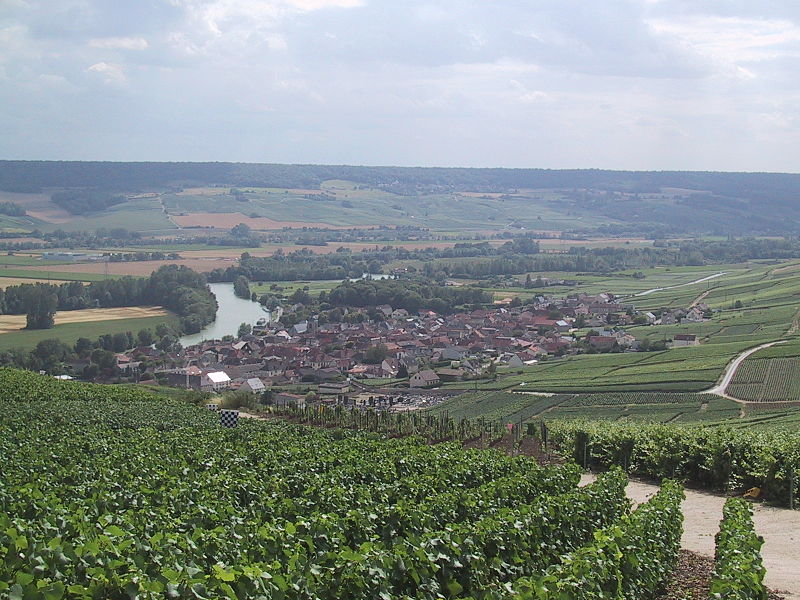
Vineyards in the premier cru village of Cumières in the Grande Vallée de la Marne. Is this the home of Drake’s $300+ Champagne?
Champagne Philippe Martin in Cumières. Founded 1892. They produce around 12,000 to 80,000 bottles which range in price from 18 to 34 euros ($20-39 US dollars). While they apparently have a healthy enotourism operation, as far as I can tell, the wines of Champagne Philippe Martin have never been exported out of France.
This kinda aligns with the Mod Sélection description of partnering with a house whose “highly sought-after champagne had never been exported for sale to the general public.” Though you have to eye roll at the “highly sought-after” part.
Is this our mystery Mod Sélection house? Perhaps. There are still at least 30 other small growers that I need to investigate. But so far Champagne Philippe Martin is our most solid lead.
Will the Champagne be worth $300+?
I highly doubt it.

